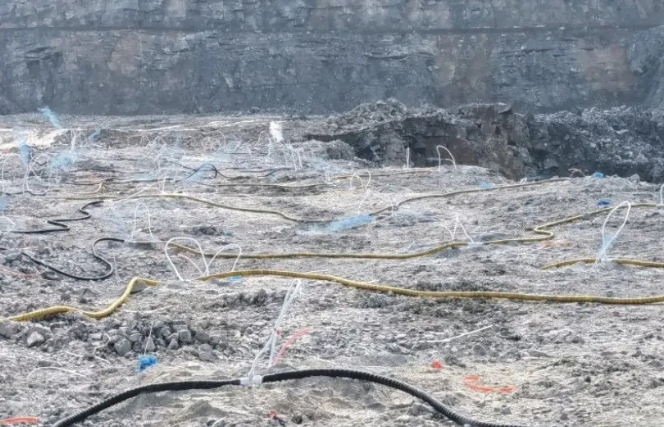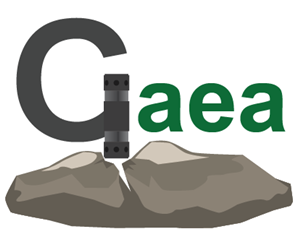Understand the principle of CO2 rock blasting system
New technology: O2 rock demolition system
Link:
Background technology: As we all know, explosive rock blasting is one of the main causes of major accidents. In other fields, when explosive blasting, it often causes great damage to surrounding buildings, personnel, etc. For example, it causes the collapse of buildings, the damage of power transmission lines, and even the loss of life. This is determined by the characteristics of explosives. The explosive explosion process is completed in a very short moment. The instantaneous chemical reaction produces a strong impact force (1000mpa-5000mpa or more). This impact force can even form strong vibrations several kilometers away, reaching the intensity of "earthquakes above level three".

A fracturing system using air energy, liquid oxygen or carbon dioxide as a fracturing medium. From a physical point of view, liquid oxygen or carbon dioxide is an industrial waste gas that already exists and is stored. Random release will cause environmental pollution, and specific storage equipment and site storage are required. Although carbon dioxide cannot burn, if it leaks, it can only be deflated. Since the deflated gas absorbs a lot of heat, it may cause local freezing of the surrounding area and cannot fracturable rocks. If the gas is deflated and exhausted in a closed space, the carbon dioxide in the workplace may exceed the standard, and even cause suffocation of the staff. Technical realization elements: The purpose of the present invention is to provide an air-expandable rock fracturing system and its use method, which has high safety, low cost and excellent fracturing effect. In order to achieve the above purpose, the present invention provides an air-expandable rock fracturing system and its use method, including an expansion tube, an air compressor, a detonator and a fracturing power supply, the expansion tube includes a pressure storage tube and a heating component, the expansion tube seals the heating component inside, the air compressor can be connected to the pressure storage tube through a pipeline, and the heating component can be detonated.

The principle of gas expansion rock cracking and the principle of carbon dioxide blasting liquid-gas phase change rock cracker utilize the characteristics of carbon dioxide phase change and the principle of instantaneous expansion of liquid carbon dioxide when absorbing heat. Carbon dioxide gas can be converted into liquid under a certain high pressure. Liquid carbon dioxide is injected into the carbon dioxide liquid storage steel pipe (also called fracturing main pipe) through high-pressure and low-temperature filling equipment, and pressure relief energy release sheets, heating devices and sealing rings are installed, and the pressure of liquid carbon dioxide in the liquid storage pipe is maintained at 5~9MPa. When a micro-current passes through the electric ignition head, it causes the heating agent to generate high temperature, instantly gasi-fying the liquid carbon dioxide, and rapidly expanding to produce a high-pressure shock wave that causes the energy release device to open, generating an expansion pressure of more than 300MPA, and instantly releasing high-pressure gas to cause the rock to break and loosen. Because it operates at low temperature, it does not blend with the liquid and gas in the surrounding environment, does not produce any harmful gases, does not generate arcs and electric sparks, and is not affected by high temperature, high heat, high humidity, and high cold. It has a diluting effect on gas during underground fracturing, without shock or dust. Carbon dioxide is an inert, non-flammable and non-explosive gas. The fracturing process is a process of gas expansion, which is physical work rather than a chemical reaction. Connect the fracturing tube and the detonator through the power cord, insert the fracturing tube into the drill hole and fix it, start the detonator, trigger the heating device to generate a lot of heat, and make the liquid carbon dioxide in the tube instantly gasify (the critical temperature of carbon dioxide liquid and gas change: 31.06℃, the critical pressure: 7.383MPa, when the temperature is higher than 31°, the liquid carbon dioxide will quickly gasify) and expand 600 times in volume. When the gas pressure in the tube exceeds the ultimate strength of the pressure relief energy release sheet (which can be set), the gas breaks through the pressure relief energy release sheet and is released from the energy release hole, instantly generating a strong air mass impact force, flushing the material along the natural cracks of the target body and pushing it away from the main body, thereby achieving the purpose of pre-cracking and loosening. After each use, the fracturing tube can be loaded with a new heating device (heat-generating agent), a pressure relief energy release sheet, and filled with liquid carbon dioxide for reuse. Under the action of explosive gas, cracks in the near-blast zone expand under the gas-driven pressure, while crack expansion in the middle zone of the blast occurs under the combined action of the gas expansion pressure field and the original rock stress. Based on the rock mesoscopic damage fracture theory, it is believed that the crack expansion process is the movement of the damage zone caused by the gradual damage from the crack tip to the surrounding rocks, thereby achieving the purpose of rock fracturing.




